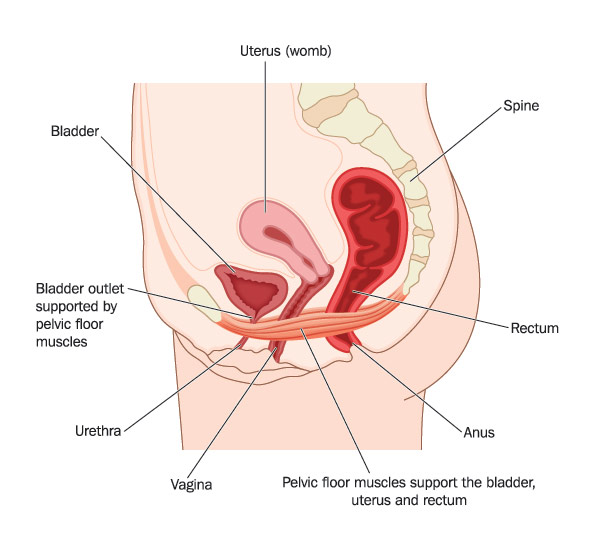How to fix incontinence
Incontinence affects many people in Australia, both male and female, and can significantly alter an individual’s quality of life. Although the definition of incontinence may vary from source to source, universally it is acceptable to base incontinence on the presence of involuntary leakage of urine or faecal matter.
Incontinence can be seen as a major burden on ones life as it can affect the ability to engage in education, employment and social interactions. According to the Australian Bureau of Statistics, a staggering 316, 500 people experience severe incontinence with the majority of individuals being female.
There are many types of incontinence. Incontinence classification is made depending on:
– The volume of matter loss
– The cause of incontinence, i.e. sudden irresistible urge or result of stress or increase in pressure (coughing, laughing, lifting heavy objects), or a combination of both
– The frequency of episodes
– Other factors such as mobility impairment
The severity of incontinence takes into account the frequency of urination or defecation and the volume or amount of loss. Qualitative measures can also be used to calculate and assist health professionals in understanding the severity of this condition, as incontinence can be an inconvenience, embarrassing and can prevent an individual from participating in daily activities.
Urinary and faecal incontinence can be prevented. Through the adoption of a healthy diet and lifestyle habits as part of your daily routine all cases can be treated and managed.
If you have recently been diagnosed with incontinence, you may feel embarrassed, overwhelmed and concerned. The physiotherapists at our Gungahlin and Canberra City West practices can help you with any questions you may have. In addition, we have noted that there is a significant misconception that only pregnancy will cause incontinence. This is a common misconception prominent throughout Australia.
The following life events and health conditions can put you at risk of developing incontinence. These include:
– Pregnancy (pre & post natal women)
– Obesity
– Menopause
– Children with poor bladder and bowel habits
– Constipation
– Those who have undergone prostatectomy and hysterectomy surgeries
– Urinary tract infections
– Reduced mobility
– Some neurological and musculoskeletal conditions
– Some medications
If affected by incontinence it is beneficial to do pelvic floor exercises as it increases the strength of the pelvic floor muscles and thereby decreases the risk of bladder and bowel leakage, and reduces the risk of prolapse of internal organs (bladder, uterus, bowel).
It is recommended to exercise pelvic floor muscles consistently everyday throughout life to prevent weakness and improve strength. Exercising weak muscles regularly over a period of time can strengthen them and help them to work more efficiently.
To activate your pelvic floor muscles:
1. Lie on your back with knees bent and feet flat. (Also try in sitting or standing tall)
2. Take a breath in and as you exhale, concentrate on gently drawing up the muscles between your legs, tightening and lifting them as if you were trying to stop the flow of urine mid stream.
3. When you feel the muscles working, continue to hold and tighten the front passage and back passage. Try not to hold your breath but continue to breath as normal. Your goal is to gently squeeze these muscles for 6- 10 seconds. Find your baseline and gradually build it up.
4. By doing this exercise, you should feel a definite lift up inside of you and definite let go when you relax the muscle.
5. For power, it is also recommended to do short quick squeezes. To do these, just squeeze your pelvic floor muscles and let go. Rest for a few seconds in between and repeat the exercise until you feel your muscles fatiguing.
If you are having trouble feeling this sensation of activating your pelvic floor, then physiotherapy with one of our physios especially trained to deal with women’s health issues can help you get back on track. We will be able to assist you with education and cues to get the right muscles working. Real Time Ultrasound is also an effective tool that the physios in our practices use to assist in checking if you are doing your muscle contractions correctly and at the right level for you.
If you or someone you know is affected by incontinence, it is important to remember you can seek help and consult with a physiotherapist at Sport & Spinal Physiotherapy Canberra. Your women’s health physiotherapist will discuss with you your concerns and also establish your dietary habits, bladder and bowel habits and lifestyle. Your physiotherapist will also assess any underlying musculoskeletal issues that may be related to your problem. From the assessment, your physiotherapist will guide you through an appropriate management plan to help treat and manage your concerns. If you are pregnant or just had your baby and you also suffer from incontinence, then our pre & post natal exercise classes can help get your pelvic floor muscles back to optimum fast!
Call us on 02 6262 4464 now and our physios will help get your pelvic floor working correctly to stop this annoying and common problem.

Very informative. Thanks.